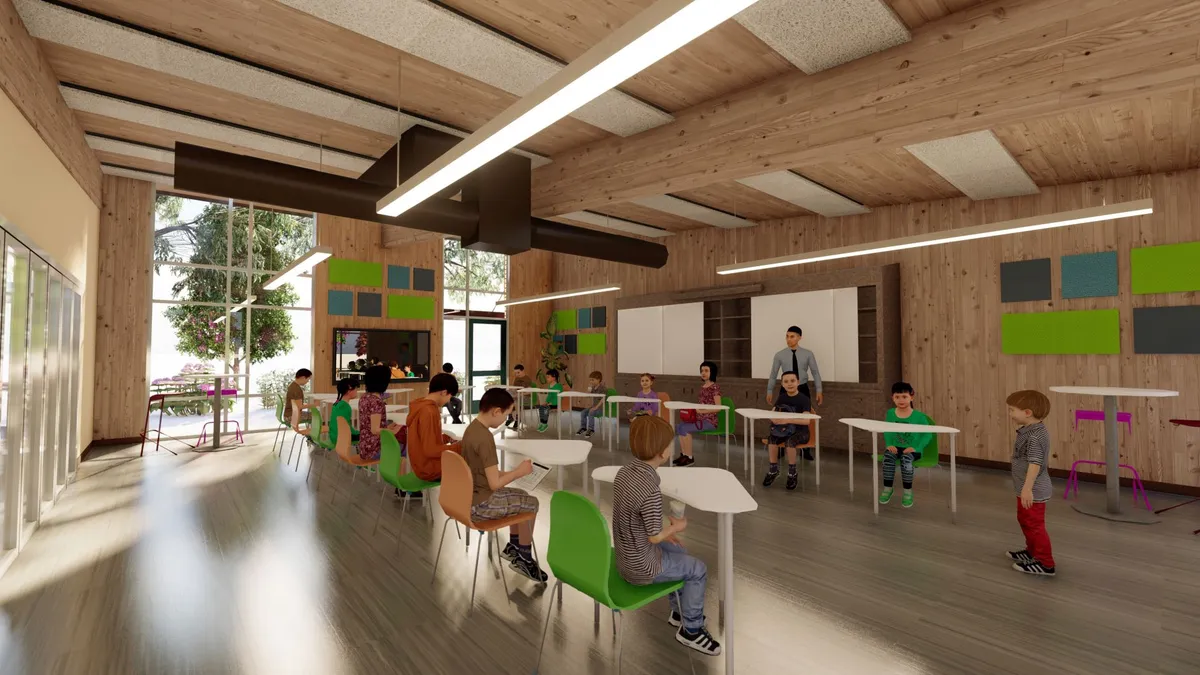Dive Brief:
- Three San Francisco Bay Area companies with experience in educational design and construction have launched a prefabricated classroom product for the California school and community college markets.
- The TimberQuest concept from XL Construction, Aedis Architects and Daedalus Structural Engineering employs cross-laminated timber to create prefabricated wall and roof panels that can be erected and installed at school construction sites in significantly shorter time frames than traditional building methods, according to a press release sent to Construction Dive.
- In addition, the structures are pre-checked and approved by California’s Division of the State Architect for use on any public school or community college project in the state, reducing permitting time from six months to a single day. Most buildings can be constructed in 10 weeks so they are ideal for scheduling during the summer break when schools are closed, the company said.
Dive Insight:
The preassembled wall and roof panels are delivered to the site complete with insulation, architectural finishes and other buildings systems, said Doug Robertson, Daedalus president, in the release. Interiors feature open layouts, tall wood ceilings and extensive natural lighting and the structures have life expectancies of 50 years or more, the company said.
TimberQuest buildings are available in three- to nine-classroom sizes of between 3,000 and 9,000 square feet. In addition to classrooms, breakout space, office/conference rooms, science labs, and restroom configurations are available.
TimberQuest received its first contract this spring, with Sacred Heart Schools in Atherton, California. With increased demand for space and calls for less capacity in lower grade classrooms due to social distancing requirements, the school saw an urgent need to expand its classroom space for its youngest students. The project was awarded April 1 and completion is projected by August 31, the company said.
Cross-laminated timber is admired by architects and builders for its strength, lightweight nature and fire resistant properties. In addition, it boasts a low carbon footprint, making it ideal for projects where sutainability is important.
The Mass Timber Code Coalition estimates that if mass timber replaced steel on a global scale, it would cut carbon dioxide emissions by up to 20%. In fact, near-term use of mass timber in seven- to 15-floor buildings could have the same carbon mitigating effect as taking more than 2 million cars off the road per year.
Nevertheless, the building technique has been slow to achieve widespread adoption and earlier this month Katerra, a proponent of prefabricated mass timber construction, filed for Chapter 11. The company said it would proceed with some ongoing projects "in a number of states," although it has notified key stakeholders in the U.S. that it will be "demobilizing."
According to Katerra, its financial challenges resulted from the pandemic; an inability to provide bonding for projects following the unexpected insolvency of a former lender; and an inability to secure "additional capital and business."














